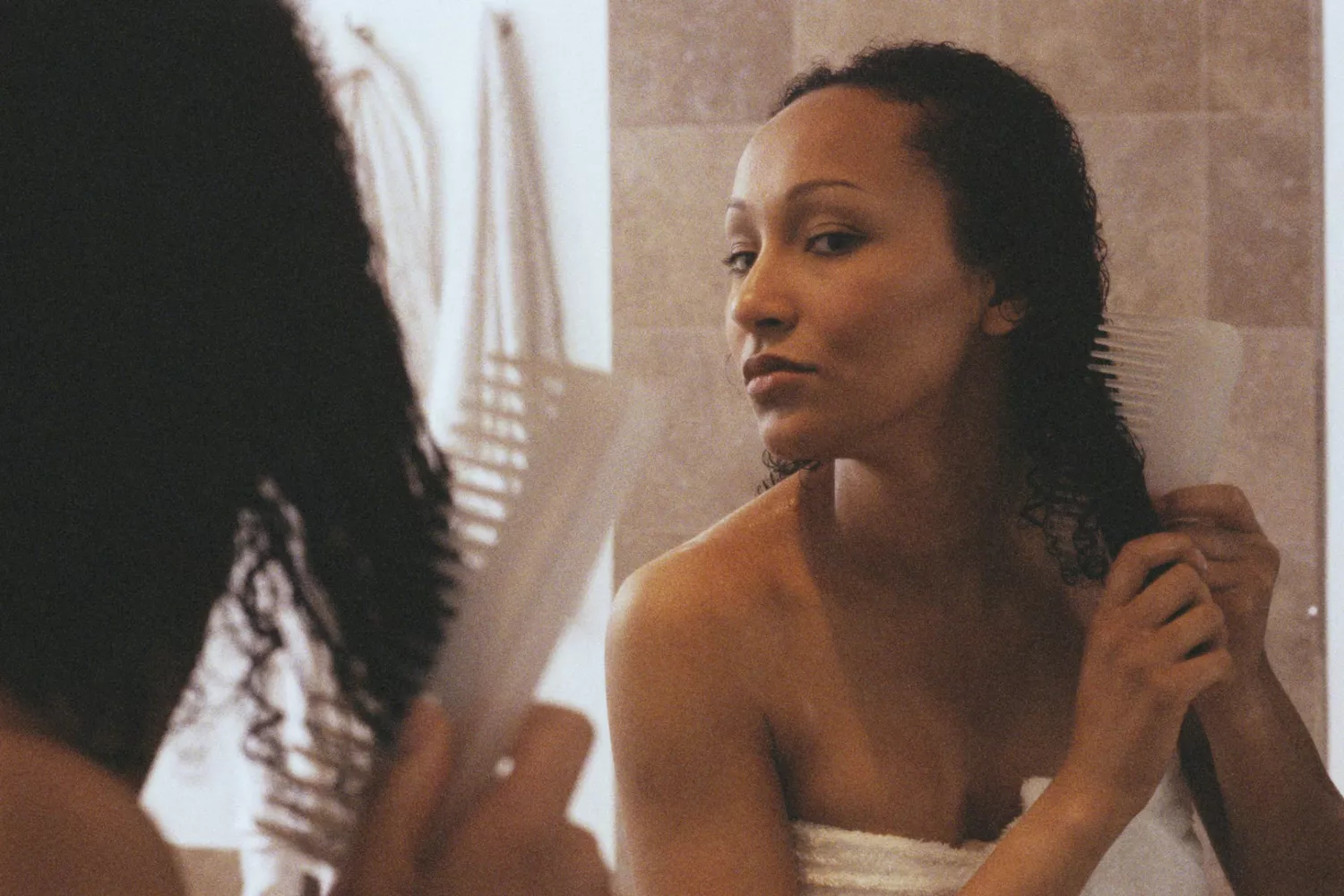
We’ve all had those nights where blow-drying our hair before bed feels like too much effort, but is it okay to go to bed with wet hair? Can air-drying your hair in certain situations do more harm than good? We contacted Brittany Johnson, a licensed cosmetologist and Senior Content Manager at Mayvenn, to learn her recommendation for balancing air-drying versus blow-drying.
Balance Is Best
Typically, we think of heat tools causing lasting damage. Still, the prolonged drying time associated with air-drying can result in stress and breakage on your strands if not properly protected. Johnson says that if you plan to sleep with wet hair, damp hair is better than very wet hair. Sleeping with overly wet hair can lead to scalp irritation and dryness. Scalp health is essential for healthy hair, so a scalp serum can help prevent irritation.
A balanced mixture of air-drying and heat-drying your hair will result in happier, healthier strands. “Air-drying your hair first not only cuts down on drying time with a blow dryer, but it also allows you to limit the amount of time you’re using heat to style your tresses,” Johnson says. “I’d suggest starting with detangling and air-drying and then moving on to blow-drying with a heat protectant product applied.”
Find What Works for You
You can take a few preventative measures if you prefer to air-dry your hair. “For any hair type and texture, using a microfiber towel to start the drying process can help limit frizz and friction,” Johnson says. You should find a hair-drying process that works best for you. Johnson recommends that people looking to enhance their natural curls or waves should use the “plopping” hair drying method for their hair. This method calls for applying a leave-in-detangler and combing it through still-wet hair. Then, apply a heat protectant and a curl cream or gel, and pile your hair on top of your head in your microfiber towel. Johnson says plopping allows the products to be absorbed into your hair as it dries, resulting in a shorter diffusing time.
Johnson says if you’re looking for straight and smooth styled hair, use a microfiber towel, detangle it with a leave-in product, and apply a heat protectant. Then allow your hair to air dry for 10 to 20 minutes before blow-drying with a round brush.
How To Avoid Blow-Drying Your Hair
If you can avoid blow drying your hair daily, it will maintain hair health for longer between haircuts. You can preserve your hairstyle between blow-dry days by sleeping with a silk pillowcase, wearing your hair in a loose scrunchie at night, or braiding your hair at night for a more uniform pattern in the morning, Johnson suggests.
You can also use moisturizing and deep conditioning products on your hair to restore strands if you are in the heat tool-loving camp. “Balancing air drying with the proper products that bring hydration and moisture to your strands is key, Johnson says. “If something isn’t working for your routine, switch it up!”



